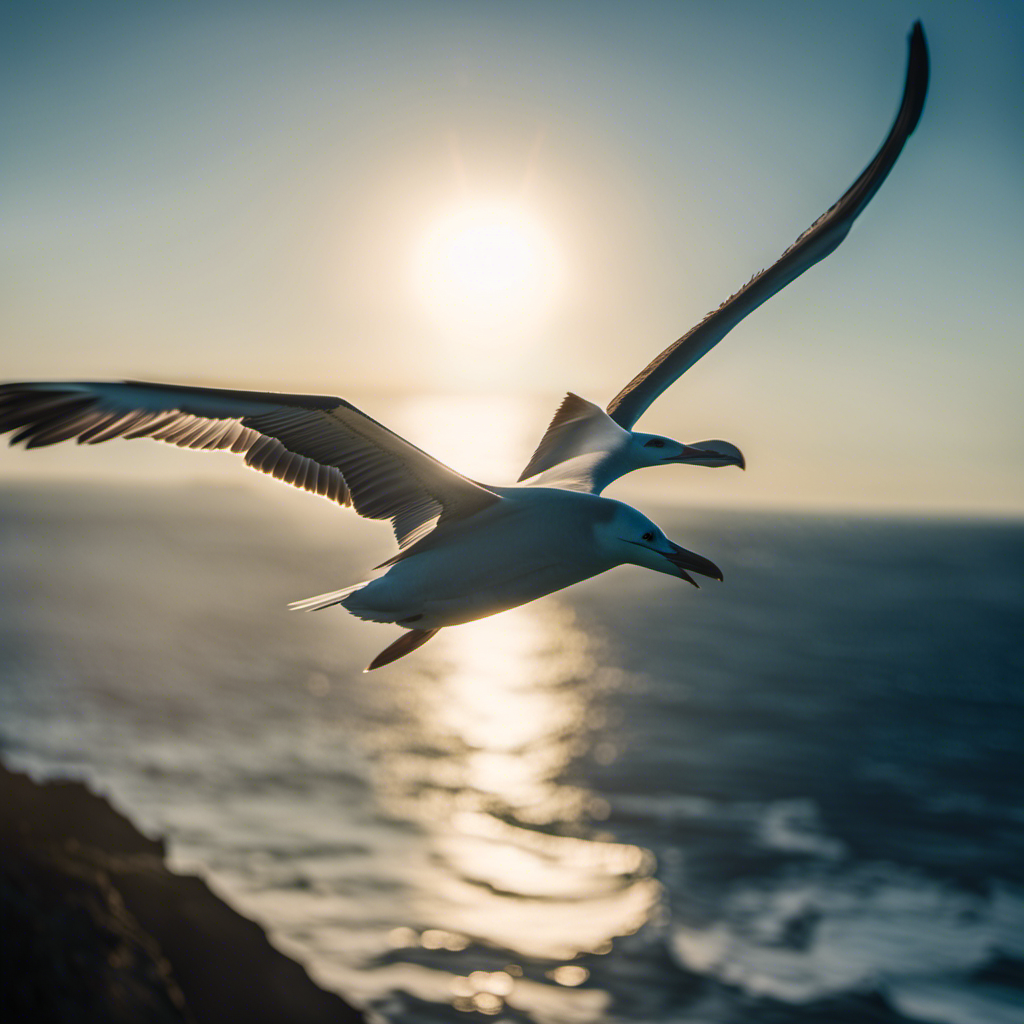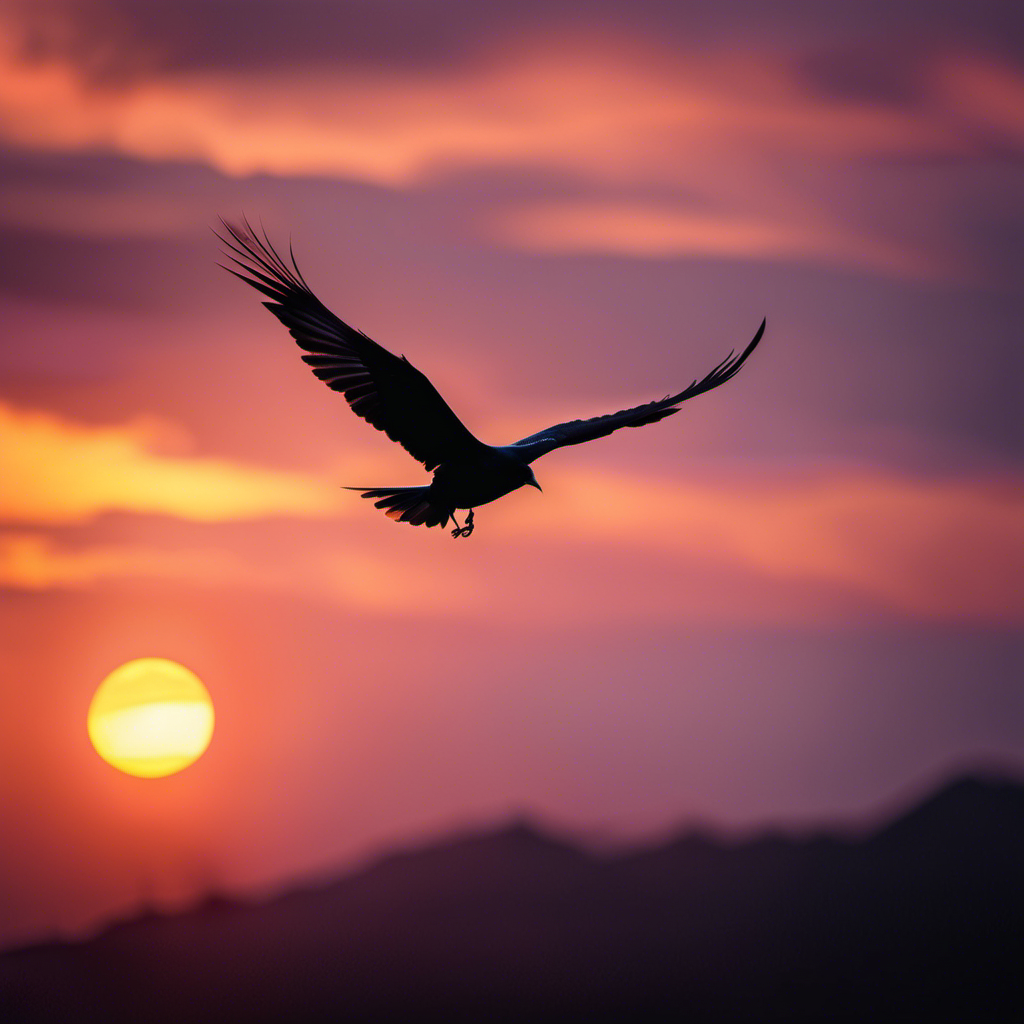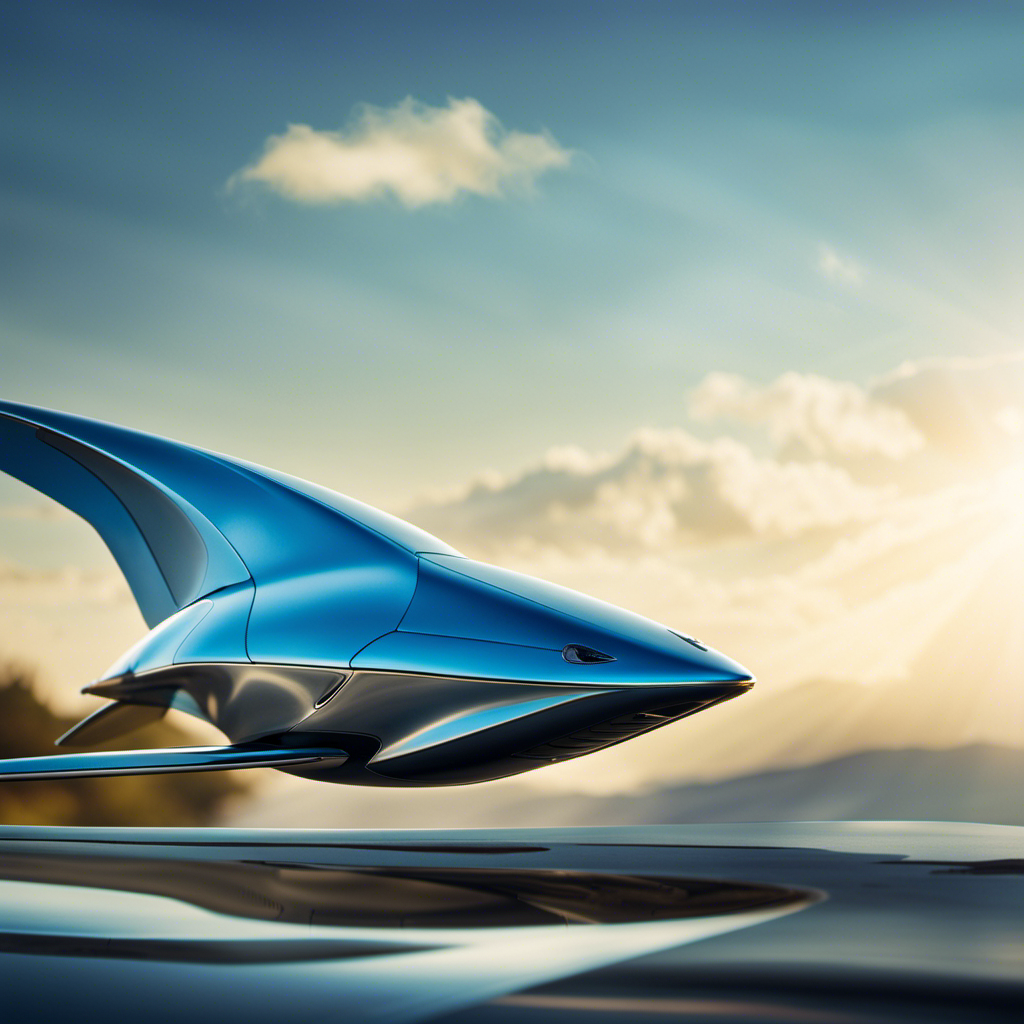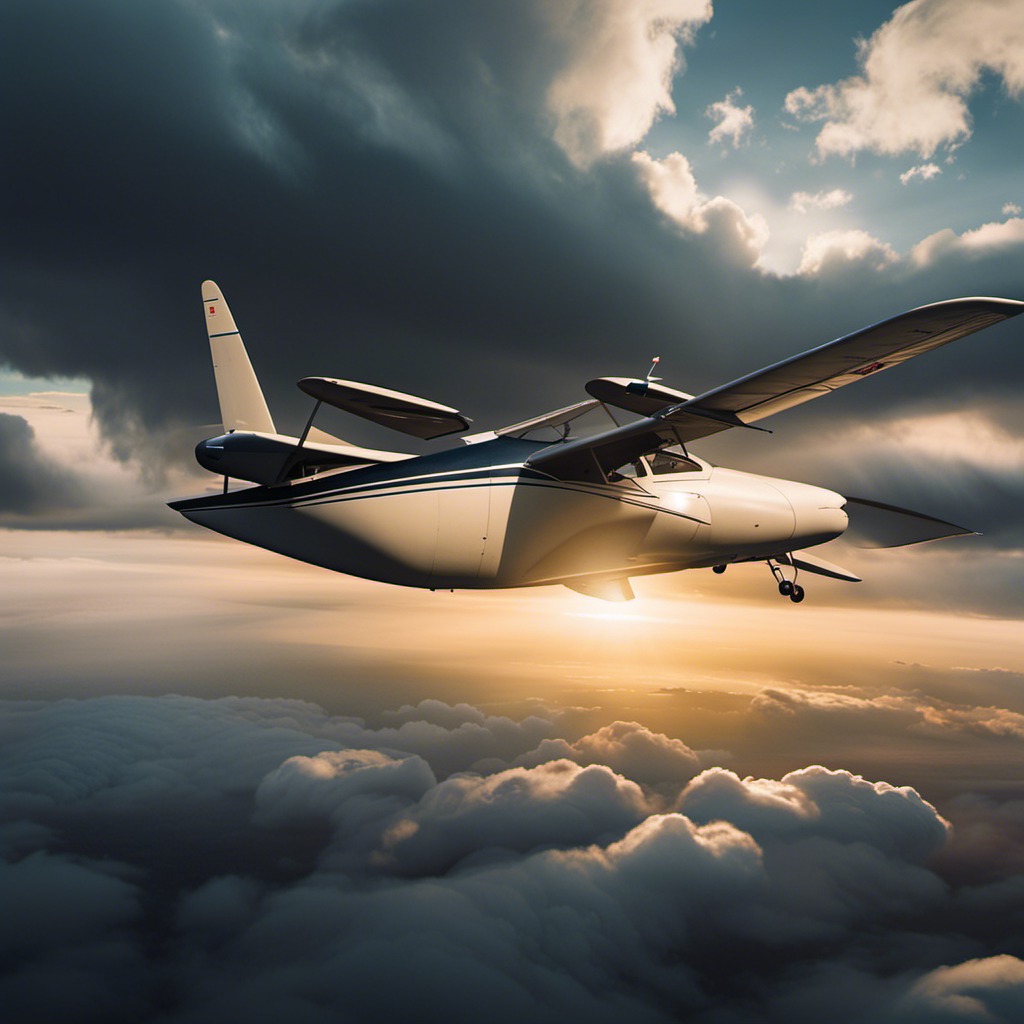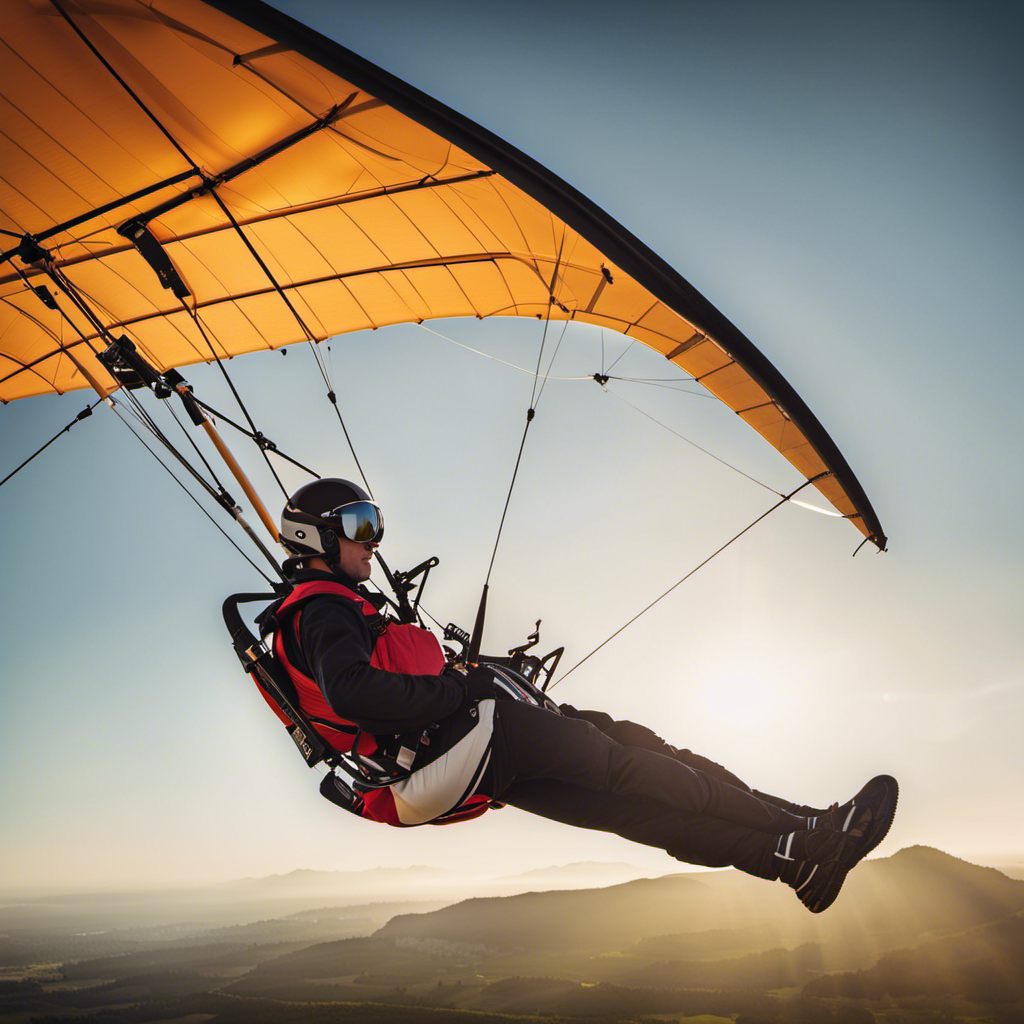As someone who loves birds passionately, I have always been fascinated by the flight abilities of different bird species. The majestic albatross, in particular, has sparked much debate regarding its flying technique. Is it true flight or just gliding that they practice?
In this article, we will delve into the anatomy of their wings, explore their migration patterns, and examine their feeding habits to debunk the myth once and for all.
Prepare to be amazed by the incredible flight capabilities of these remarkable birds.
Key Takeaways
- Albatrosses have long, narrow wings for efficient gliding and soaring.
- They use dynamic soaring and slope soaring to gain altitude and speed.
- Albatrosses cover vast distances during migration, utilizing wind patterns and updrafts to conserve energy.
- Albatross flight involves a combination of flapping and gliding techniques.
Overview of the Albatross Species
The albatross is a large seabird that can fly or glide for long distances. It belongs to the family Diomedeidae and is known for its impressive wingspan, which can reach up to 11 feet.
Albatrosses play a crucial ecological role in marine ecosystems, as they are top predators and can travel vast distances in search of food. Unfortunately, albatross populations have been declining rapidly in recent years, mainly due to threats such as longline fishing, habitat destruction, and pollution.
These declines are concerning because albatrosses are not only beautiful creatures but also vital for maintaining the balance of marine ecosystems. Understanding the factors contributing to their decline is crucial for implementing effective conservation measures.
Now, let’s delve into the fascinating anatomy of albatross wings.
Anatomy of Albatross Wings
With their long, slender wingspan, albatrosses can effortlessly soar through the air. The wing structure of albatrosses is highly specialized for efficient flight. Their wings are long and narrow, providing a large surface area for generating lift.
The primary feathers at the tip of the wings are extremely long, allowing albatrosses to adjust their wing shape and optimize aerodynamic performance. This adaptation enables them to fly for long distances without expending much energy.
The flight mechanics of albatrosses involve a combination of flapping and gliding. They use flapping to gain altitude and maintain stability, while gliding allows them to cover vast distances with minimal effort.
Flight Techniques of Albatrosses
You can observe how albatrosses effortlessly navigate the skies by using a combination of flapping and gliding. Their flight mechanics and soaring techniques are truly remarkable. Here are some key details:
- Albatrosses have long, narrow wings that allow for efficient gliding and soaring.
- They utilize dynamic soaring, taking advantage of wind patterns to gain altitude and speed.
- Albatrosses also employ slope soaring, using the updrafts created by wind blowing against cliffs or waves.
- Flapping is used during takeoff, landing, and when flying against the wind.
These techniques enable albatrosses to cover vast distances without expending excessive energy. As they gracefully soar through the air, they are able to effortlessly traverse the oceans in search of food and suitable breeding grounds.
Speaking of their incredible journeys, albatross migration patterns reveal even more fascinating information about these remarkable birds.
Albatross Migration Patterns
Albatrosses effortlessly cover vast distances during migration, utilizing wind patterns and updrafts to conserve energy. These majestic birds have well-established migration routes that they follow year after year. The specific routes can vary depending on the species and their breeding locations, but generally, albatrosses migrate from their breeding grounds in the Southern Ocean to foraging areas in the North Pacific or North Atlantic.
Factors such as food availability, ocean currents, and seasonal changes influence the timing and direction of their migration. Albatrosses are known for their ability to navigate long distances, often flying for days without rest. Understanding these migration patterns and the factors that influence them is crucial for conservation efforts and ensuring the survival of these remarkable birds.
Speaking of survival, let’s now delve into the fascinating world of albatross feeding habits.
Albatross Feeding Habits
To understand albatross feeding habits, let’s take a closer look at the types of prey they rely on in their foraging areas. Albatrosses have developed specialized foraging techniques to capture their preferred prey. Here are five key aspects of their feeding habits:
- Albatrosses primarily feed on squid, fish, and krill, depending on their location and availability.
- They use a combination of visual and olfactory cues to locate their prey, relying on their keen eyesight and sense of smell to detect food from a distance.
- Once prey is detected, albatrosses use their powerful beaks to snatch or grab the food from the water’s surface or while in flight.
- They are also known for their ability to dive underwater to catch prey, using their wings to propel themselves into the depths.
- Albatrosses have a unique feeding strategy called ‘kleptoparasitism,’ where they steal food from other seabirds by harassing them until they drop their catch.
By understanding these feeding habits, we can gain insight into the fascinating world of albatross foraging techniques.
Moving forward, let’s explore their hunting strategies without missing a beat.
Albatross Hunting Strategies
Keep your eyes peeled as we dive into the fascinating hunting strategies of these incredible seabirds.
Albatrosses have developed various hunting techniques to capture their prey efficiently. One of their most common strategies is called surface-seizing, where they snatch prey items from the ocean’s surface using their hooked bills. This method is particularly effective when targeting small fish and squid.
Another technique employed by albatrosses is known as plunge diving. In this strategy, they soar high above the water and then dive rapidly, using their powerful wings to propel themselves deep into the ocean. This allows them to chase prey underwater for longer periods.
By combining these hunting strategies, albatrosses are able to forage over vast distances and cover extensive areas in search of food.
Now, let’s explore their fascinating breeding behavior.
Albatross Breeding Behavior
During breeding season, male albatrosses engage in elaborate courtship displays to attract a mate. These magnificent birds, known for their impressive wingspan and long-distance flights, go through specific rituals to ensure successful reproduction.
- Males perform intricate dances, involving wing movements and bill clapping, to exhibit their strength and vitality.
- They also engage in vocalizations, producing a variety of calls and songs to communicate their availability and fitness.
- Displaying their plumage is another important aspect of courtship, as males flaunt their colorful feathers to impress potential partners.
- Albatrosses establish and defend territories, often engaging in confrontations with other males to assert their dominance.
- Once a pair is formed, the male and female engage in mutual preening, reinforcing their bond and strengthening their relationship.
These albatross breeding seasons are critical for the continuation of the species, as successful courtship rituals lead to the formation of stable pairs and subsequent nesting.
From courtship displays to pair bonding, the intricate world of albatross courtship rituals showcases the fascinating behaviors of these majestic birds.
Albatross Courtship Rituals
During my research on albatross breeding behavior, I discovered fascinating details about their courtship rituals.
Albatross courtship is a complex and elaborate process that involves a series of displays and behaviors. Males and females engage in synchronized dances, where they bow, preen, and vocalize to attract a mate.
These courtship rituals often take place in large colonies, where hundreds of albatross gather to find a partner. The dances can last for hours, with both males and females participating actively.
This intricate courtship behavior plays a crucial role in pair bonding and mate selection among albatross species. Understanding these rituals provides insights into the social dynamics and reproductive success of these majestic birds.
Now, let’s delve into the next section, where we explore the fascinating world of albatross nesting sites.
Albatross Nesting Sites
You’ll be amazed by the diverse locations where these magnificent birds choose to build their nests. Albatross nesting sites can be found on remote islands and coastal cliffs, often in large colonies.
These birds exhibit interesting nesting behavior, as they typically mate for life and return to the same site each year. The success of their breeding depends on several factors, such as the availability of suitable nesting material and the absence of predators.
Albatrosses lay a single egg, which both parents take turns incubating for about two months. Once the chick hatches, the parents provide it with food and protection until it is ready to fledge.
This transition from nesting to parental care is a critical stage in the albatross life cycle, ensuring the survival of their offspring.
Parental Care in Albatrosses
After exploring the fascinating nesting sites of albatrosses, let’s delve into the realm of parental care in these majestic birds.
Albatrosses are known for their extraordinary commitment to their offspring, displaying a high level of parental investment. Once the eggs hatch, both parents take turns in chick-rearing duties, diligently providing food and protection. This shared responsibility ensures the survival and well-being of the vulnerable chicks.
Albatrosses have evolved a unique system of nurturing their young, which allows them to thrive in their harsh marine environment. Understanding the intricacies of parental care in albatrosses provides insight into their remarkable adaptability and reproductive success.
Now, let’s shift our focus to the lifespan and reproduction of these incredible birds, unraveling the secrets of their long and fruitful lives.
Albatross Lifespan and Reproduction
To truly understand the remarkable lifespan and reproduction of these majestic birds, take a moment to appreciate the incredible adaptations they have developed. The albatross, known for its impressive wingspan and soaring flight, has evolved unique strategies for reproductive success and long life.
Here are four fascinating facts about albatross reproductive strategies and lifespan variations:
-
Delayed Maturity: Albatrosses reach sexual maturity at a later age compared to other birds, often between 5-10 years old, allowing them to build up their reserves before reproducing.
-
Lifelong Pair Bonds: Once they find a mate, albatrosses form lifelong pair bonds, returning to the same nesting site year after year to breed and raise their young.
-
Long Lifespan: Albatrosses are known for their exceptional longevity, with some individuals living up to 60 years or more. This extended lifespan enables them to successfully raise multiple chicks over their lifetime.
-
Low Reproductive Rate: Albatrosses have a low reproductive rate, usually producing only one egg per breeding season. This strategy ensures that they invest significant time and energy into raising a single offspring to increase its chances of survival.
Understanding the intricacies of albatross reproductive strategies and lifespan variations is crucial for effective conservation efforts, which aim to protect these incredible birds and their fragile habitats.
Albatross Conservation Efforts
As I delve into the topic of albatross conservation efforts, it is crucial to examine the impact of human activities on these magnificent birds.
Human activities such as overfishing, pollution, and habitat destruction have posed significant threats to albatross populations worldwide.
However, amidst these challenges, various conservation initiatives have been implemented to protect and preserve these vulnerable species.
These initiatives include the establishment of protected areas, the development of sustainable fishing practices, and the reduction of plastic waste in marine environments.
Impact of Human Activities
You should consider the impact of human activities on the ability of albatross to fly or glide. These magnificent birds, known for their impressive wingspan and graceful flight, are facing numerous challenges due to human actions. Here are some key factors to consider:
-
Pollution: The release of pollutants into the air and water can have detrimental effects on albatross populations. Chemicals, such as oil spills or plastic debris, can contaminate their habitats and interfere with their flight abilities.
-
Climate change: The changing climate patterns, including rising temperatures and altered wind patterns, can disrupt the natural flight patterns of albatross. These changes can affect their ability to find food and navigate long distances.
-
Habitat destruction: Human activities, such as coastal development or habitat degradation, can destroy the critical nesting and foraging areas for albatross. Without suitable habitats, their ability to fly and glide is severely compromised.
-
Overfishing: Albatross rely on marine resources for food, and overfishing can deplete their food sources, making it harder for them to sustain flight.
-
Bycatch in fishing gear: Albatross are prone to becoming unintentional victims of fishing operations, getting caught in fishing lines or nets. This can lead to injuries or death, hindering their ability to fly.
Considering these impacts, it’s crucial to understand the threats to albatross populations and take steps to mitigate them.
Threats to Albatross Populations
Transition: As we delve into the threats facing albatross populations, it is important to understand the impact of human activities on these magnificent birds.
Current Subtopic: Threats to Albatross Populations
Albatross populations are facing numerous threats, many of which are directly caused by human actions. These threats include habitat destruction, pollution, climate change, and overfishing. Let’s examine each of these threats in detail in the table below:
| Threat | Description |
|---|---|
| Habitat Destruction | Destruction of breeding grounds and nesting sites |
| Pollution | Oil spills and marine debris affecting food sources |
| Climate Change | Rising sea levels and changing ocean currents |
| Overfishing | Reduced food availability and bycatch in fishing nets |
These threats have resulted in a decline in albatross populations worldwide. To counteract these detrimental effects, various conservation measures have been implemented. These initiatives aim to protect albatross habitats, reduce pollution, mitigate climate change, and establish sustainable fishing practices. By implementing these measures, we can help safeguard the future of albatross populations and ensure the survival of these remarkable birds.
Conservation Initiatives
To protect albatross populations, conservation initiatives have been implemented to address the threats they face. These initiatives aim to mitigate the negative impacts of human activities on these magnificent seabirds. Here are four key conservation strategies being employed:
-
Reducing bycatch: Albatrosses often get caught in fishing gear, leading to injury or death. By implementing measures such as using bird-friendly fishing techniques and equipping fishing vessels with bird scaring lines, we can minimize accidental albatross capture.
-
Protecting breeding sites: Albatrosses rely on specific breeding sites, which are vulnerable to human disturbance and habitat destruction. Establishing protected areas and enforcing strict regulations help safeguard these crucial nesting grounds.
-
Raising awareness: Educating the public about the importance of albatross conservation and the threats they face is essential. By increasing awareness, we can encourage responsible behavior and support for conservation efforts.
-
International cooperation: Albatrosses migrate across vast distances and are found in multiple countries. International collaboration is crucial to ensure effective conservation measures are implemented across their entire range.
Through these conservation initiatives, we hope to reverse the negative impacts of human activities on albatross populations and secure a future for these majestic birds.
Transitioning into the subsequent section about ‘research and studies on albatross flight,’ we explore the fascinating world of their aerial abilities.
Research and Studies on Albatross Flight
There’s been extensive research on albatross flight patterns and techniques. Scientists have conducted numerous studies to understand the flight mechanics of these magnificent birds. Through their research findings, they have discovered fascinating insights into how albatrosses achieve such remarkable flight capabilities.
One interesting aspect of albatross flight is their ability to soar effortlessly for long periods without flapping their wings. This phenomenon, known as dynamic soaring, allows them to harness the power of wind currents and effectively glide through the air. To illustrate this point, let’s take a look at the following table:
| Flight Technique | Description |
|---|---|
| Dynamic Soaring | Utilizing wind gradients for energy-efficient flight |
| Flapping and Gliding | Combined use of wing flapping and gliding |
| Thermal Soaring | Relying on rising warm air currents |
| Slope Soaring | Utilizing updrafts created by terrain |
These flight techniques showcase the adaptability and efficiency of albatrosses when it comes to navigating the skies. It is through these research efforts that we gain a deeper understanding of their flight capabilities and debunk the myth that albatrosses can fly. Instead, they have evolved to glide with extraordinary grace and precision, utilizing the forces of nature to their advantage.
Debunking the Myth: Albatrosses Can Fly
Contrary to popular belief, these magnificent birds have not evolved to fly, but rather to glide effortlessly through the air.
Albatross flight mechanics are a fascinating subject of study, and it is important to debunk the misconceptions surrounding their ability to fly.
Albatrosses have long wingspans and a unique wing shape that allows them to soar for long distances without flapping their wings.
They rely on the dynamic soaring technique, utilizing the wind patterns and air currents to gain altitude and maintain flight.
By adjusting their wing positions and using slight movements, they can navigate the skies with exceptional precision.
Understanding the mechanics behind their gliding abilities sheds light on the true nature of their flight.
Now, let’s delve into the conclusion and truly appreciate the amazing flight abilities of albatrosses.
Conclusion: Appreciating the Amazing Flight Abilities of Albatrosses
In conclusion, we can truly appreciate the incredible flight abilities of albatrosses. These magnificent birds have evolved unique techniques that allow them to soar effortlessly across vast distances.
Albatrosses are expert gliders, utilizing a combination of wind currents and their impressive wingspan to stay aloft for extended periods. With wingspans reaching up to 11 feet, they have the largest wingspan-to-body weight ratio of any bird, which enables them to efficiently glide for hours without flapping their wings.
Additionally, albatrosses have developed a keen sense of understanding migration patterns, using a combination of celestial cues, magnetic fields, and landmarks to navigate their way across the oceans.
Frequently Asked Questions
How long do albatrosses typically live?
On average, albatrosses have an impressive lifespan ranging from 50 to 60 years. However, longevity records show that some individuals have lived up to 70 years, making them one of the longest-living birds in the world.
How do albatrosses feed and what is their diet?
Albatrosses have a varied diet, feeding mainly on fish, squid, and krill. They employ different feeding strategies, such as surface-seizing, plunge-diving, and scavenging. Their feeding habits and diet vary depending on the species and their ecological niche.
How do albatrosses reproduce and care for their offspring?
Albatrosses exhibit unique reproductive behavior and parenting strategies. For example, the Wandering Albatross performs an elaborate courtship dance to attract a mate. Once the female lays an egg, both parents take turns incubating it and caring for the chick until it can fend for itself.
What are some interesting courtship rituals observed in albatrosses?
Albatross courtship rituals involve unique dances and complex vocalizations. These rituals are fascinating to observe as they showcase the intricate behaviors and communication methods used by these majestic birds to attract a mate.
What are the main threats to the conservation of albatross populations?
Illegal fishing and climate change are the two main threats to albatross conservation. Illegal fishing deprives them of their food source, while climate change disrupts their nesting sites. It’s an uphill battle, but we must act now to protect these magnificent birds.
Conclusion
In conclusion, after delving into the world of albatross flight, it is clear that these majestic creatures are indeed capable of flying. Through their unique anatomy and specialized flight techniques, albatrosses are able to soar effortlessly across vast distances, defying gravity with grace and power.
The notion that they simply glide is a misconception that fails to acknowledge the true marvel of their flight abilities. So next time you spot an albatross in flight, take a moment to appreciate the incredible feat of nature unfolding before your eyes.
How can we not marvel at such a magnificent display of aerial mastery?
